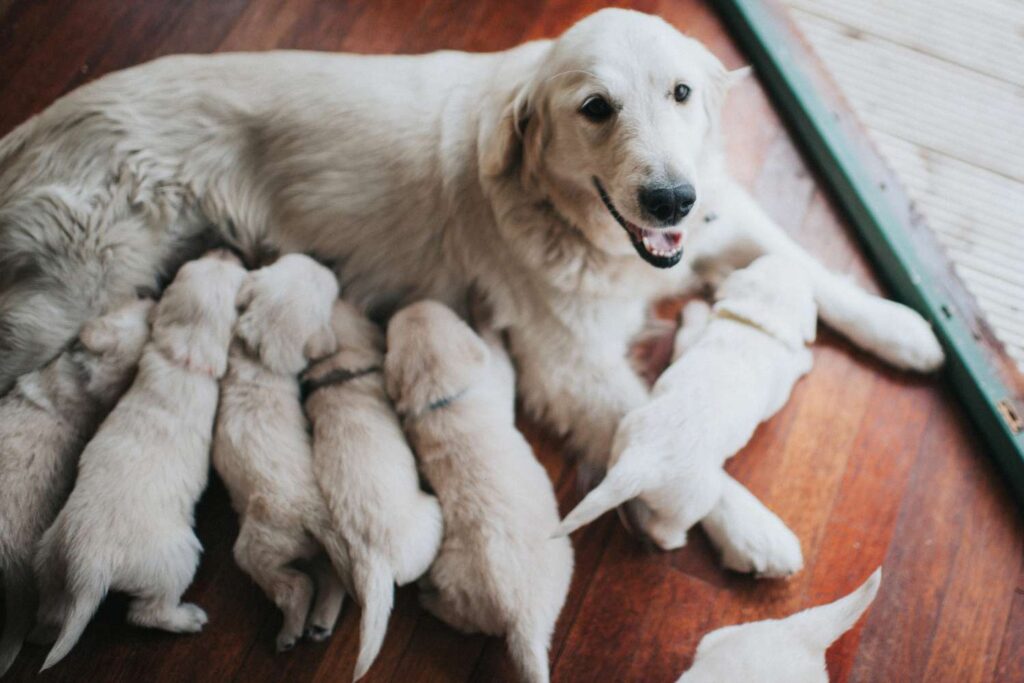
Most dogs give birth with no outside assistance. Natural evolution requires that dams can deliver on their own in the wild. Otherwise, they would not survive. Humans, however, have caused several artificial evolutionary changes over time to dog breeds and the ease of birth no longer exists for certain dams.
Dystocia is when there is difficulty whelping puppies. Dogs go through two stages of birth. The first stage is when contractions start, the dam exhibits restless nesting behavior, and she may start to pant. This stage lasts typically 12-24. If this stage begins before day 57 or after day 70 of her pregnancy, this is an indicator of potential dystocia and the vet should be contacted.
Stage two is when puppies begin to be born. If the dam is actively pushing for thirty minutes or longer, but no puppy has appeared, this is a sign of dystocia and the vet should be contacted. If dystocia does occur and no help is given, the mother and/or the puppies will not survive.
If you are careful in your breeding selection, however, dystocia is a problem most dogs never face. Dogs such as labs, huskies, and golden retrievers typically glide through whelping without a hitch. Although a breeder should always be present to assist if needed, these breeds rarely need more than a sign of encouragement that they are making you proud. They are evolutionary masterpieces of whelping ease.
Dog breeds that are more prone to whelping problems are toy breeds and brachycephalic breeds. A dog will also have a tendency toward dystocia if a large male, with a large head, is mated to a small female. Ideally, the female should be larger than the male. Otherwise, a large puppy may get stuck inside a tiny birth canal with no way out.
Toy breeds, teacups, and dogs bred to be micro such as chihuahuas generally have more difficulties with whelping. They are so cute and loveable, but they also have tiny birth canals. Little breeds also typically have smaller litters. Due to the size of the litter and the cost of the vet, breeders may need to weigh how often mating is worth the risk.
Brachycephalic breeds are short-snout dogs such as bulldogs and boston terriers. Pugs, mastiffs, Pekingese, boxers, and shih tzus also fall in this category. Their heads are typically larger in proportion to the rest of their bodies. This means that the puppy’s large head may get lodged and block the birth canal during the whelping process. Many of these dogs have difficulty conceiving as well, which is nature’s way of indicating they may be more prone to dystocia.
Health factors will also affect a dam’s level of tendency toward dystocia. If she is overweight or getting older she can experience dystocia even if it was previously not a problem. Sometime between the ages of five to seven years old, a dam should be retired from breeding. At the age of five, the dam is roughly thirty-five years old in dog years and giving birth is still going to typically be okay. She is getting a little older and should be monitored well. At the age of seven, however, the dam is roughly sixty-two years old in dog years and breeding should be out of the question.
Being a responsible breeder and recognizing whether your dog has a tendency toward dystocia is very important. If dystocia occurs, a vet must be contacted and included in the whelping process. If professional help is given, the dam and the puppies typically thrive and all is well.



